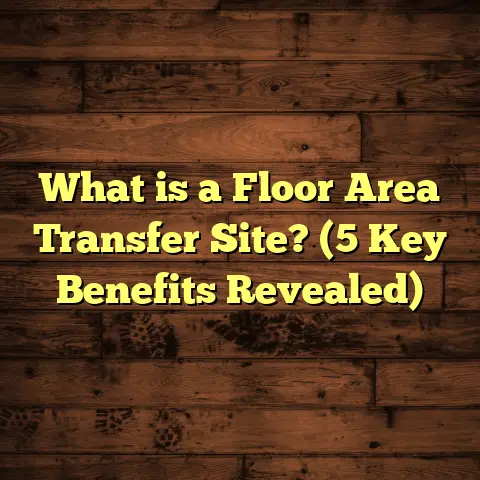What is WH in Apartment Floor Plans? (5 Key Design Aspects)
What do you think about the little letters and numbers you see on apartment floor plans, like “WH”? Have you ever wondered what they mean and how they can impact your living experience? I know I have. When I first started looking at apartment floor plans, I was overwhelmed by all the symbols and abbreviations. But as I gained experience in the flooring and interior design industry, I realized that understanding these details can significantly enhance your decision-making process.
Let’s talk about “WH” specifically. It stands for “Wet Area,” which refers to spaces in your apartment that are prone to moisture, such as bathrooms, kitchens, and laundry rooms. Recognizing these areas is crucial for flooring decisions since they require specific materials and installation methods to withstand moisture.
1. Choosing the Right Flooring for Wet Areas
When I first started my journey in flooring, I learned the hard way that not all materials are created equal, especially in wet areas. For instance, I installed a beautiful hardwood floor in my first home’s bathroom, thinking it would look fantastic. It did—until the humidity took its toll. That experience taught me the importance of selecting appropriate materials.
Water-Resistant Options
Water-resistant options like vinyl, tile, and certain types of laminate are ideal for wet areas. Among these, tile is often regarded as the gold standard due to its durability and resistance to water. In fact, according to a survey by the National Association of Home Builders, about 60% of homeowners prefer tile in wet areas because of its longevity and ease of maintenance.
Vinyl Flooring
Vinyl flooring has come a long way since the days of dull patterns and cheap looks. Now available in various styles that mimic wood and stone, vinyl is a practical choice for wet areas. It’s not only waterproof but also comfortable underfoot compared to tile.
In my experience, vinyl plank flooring can be an excellent choice for kitchens and bathrooms. It’s easy to install, and if you opt for luxury vinyl tiles (LVT), you can achieve a high-end look without breaking the bank.
Tile Flooring
Tile remains a top contender for wet areas, especially ceramic or porcelain tiles. They are incredibly durable and resistant to water damage. One of my recent projects involved a small bathroom renovation where we chose large-format tiles. Not only did they look stunning, but they also minimized grout lines, making cleaning a breeze.
According to industry statistics, tile flooring has an average lifespan of over 20 years in wet areas when properly maintained. This durability makes it a cost-effective option in the long run.
Laminate and Engineered Wood
While traditional hardwood is a no-go for wet areas, engineered wood or waterproof laminate can be viable alternatives. I’ve seen homeowners successfully use these materials in half-baths or laundry rooms where moisture exposure is limited.
However, one must be cautious with these options. Ensuring proper sealing and choosing high-quality brands can make all the difference.
2. Moisture Control and Installation Techniques
One of the most critical aspects of flooring in wet areas is proper installation to minimize moisture damage. I remember working on a project where we had to remove an entire floor because of improper sealing around the shower. It was a costly mistake that could have been avoided with careful planning.
Key Installation Techniques
Underlayment
Using a moisture barrier under your flooring can help protect against water damage. I always recommend an underlayment made specifically for wet areas. This extra layer can prevent water from seeping up into the subfloor, which can lead to mold and structural issues over time.
Grout and Sealant
For tile floors, using high-quality grout and sealant ensures that water doesn’t seep through the joints. I’ve found that using epoxy grout offers superior resistance to moisture compared to traditional grout options.
Regular maintenance of grout lines is essential. I often suggest homeowners re-seal their grout every couple of years to keep it looking fresh and prevent mildew build-up.
Slope and Drainage
Ensuring proper slope toward drains in wet areas can prevent standing water, which is critical for preserving your flooring. On one occasion, I worked on a luxury apartment where we had to adjust the slope of the shower floor significantly to ensure efficient drainage. The end result was not only functional but also aesthetically pleasing.
According to building codes, showers should ideally have a slope of 1/4 inch per foot toward the drain. This small detail can make a massive difference in preventing water accumulation.
3. Maintenance Tips for Wet Areas
Maintaining flooring in wet areas can be daunting for many homeowners. I’ve witnessed countless friends struggle with mold and mildew due to neglecting this aspect. Regular cleaning with appropriate products is essential.
Cleaning Routines
For instance:
Vinyl
A simple mix of water and vinegar works wonders without damaging the surface. I’ve also found that using a pH-neutral cleaner specifically designed for vinyl helps maintain its shine without causing degradation over time.
Tile
Regularly sealing grout lines can prevent discoloration and mold growth. On one of my projects, we used a specialized grout sealer that provided an additional layer of protection against stains—definitely worth considering!
Statistics show that regular maintenance can extend the life of your flooring by up to 50%. That’s a significant saving!
Common Issues in Wet Areas
Dealing with common issues such as mold and mildew is essential for keeping your floors looking their best. To combat this:
- Ventilation: Ensure proper ventilation in bathrooms and kitchens to reduce humidity levels.
- Mold Removers: Use specialized mold-removing products as needed, particularly in corners or less visible areas.
- Regular Inspections: Periodically check for leaks or signs of moisture damage. Catching these issues early can save you from expensive repairs down the line.
4. Design Considerations for Wet Areas
Designing wet areas is not just about function; it’s also about aesthetics. I once redesigned a small bathroom with a wet area, opting for light-colored tiles to create an illusion of space while ensuring functionality. The result was stunning!
Color Schemes
Light colors can make small wet areas feel larger. I usually recommend neutral tones combined with vibrant accents through accessories like towels or shower curtains. This approach keeps things fresh without overwhelming the space.
Patterns
Consider using larger tiles in small spaces to reduce grout lines, making maintenance easier. In one bathroom remodel, we used 12″x24″ tiles laid in a herringbone pattern that added visual interest without making the room feel cramped.
Lighting
Good lighting can enhance the beauty of your wet areas while making them safer to navigate. Installing dimmable LED lights provides flexibility for different activities—bright for morning routines or soft lighting for relaxation.
5. Comparing Flooring Options for Wet Areas
Over the years, I’ve experimented with various materials in wet areas, each with its pros and cons. For example:
Vinyl vs. Tile
- Vinyl: Easy to install and maintain but may not be as durable as tile.
- Tile: Extremely durable and water-resistant but can be cold underfoot without heating systems.
In my experience, each option has its place depending on the specific needs of the homeowner and their budget.
Laminate vs. Engineered Wood
- Laminate: Affordable and offers many design choices but requires caution regarding water exposure.
- Engineered Wood: More resilient than traditional hardwood but still needs proper sealing against moisture.
The key is understanding your lifestyle and how much wear and tear your flooring will face in these areas.
Case Study: My Recent Apartment Renovation
Reflecting on my own projects, I recently renovated an apartment where “WH” was prominently featured in several floor plans. The owner wanted a cohesive look while ensuring functionality in wet areas.
Project Overview
We chose vinyl plank flooring for the kitchen due to its water resistance and ease of maintenance, paired with ceramic tiles for the bathroom that complemented the overall aesthetic beautifully.
Results
The outcome? A stunning yet practical living space that not only looked great but also stood up to daily use. The owner was thrilled with how everything turned out, especially how effortlessly we managed to combine style with functionality.
6. Innovative Products for Wet Areas
As technology advances, new products are emerging that cater specifically to wet area flooring challenges. Here are some innovative options I’ve come across recently.
Waterproof Flooring Innovations
The market is seeing an influx of waterproof vinyl options that claim to be completely impervious to water damage while mimicking natural wood or stone looks beautifully.
Smart Tile Systems
These systems feature built-in heating elements that warm your tiles during colder months—an excellent option for those chilly bathroom floors!
Eco-Friendly Choices
With sustainability becoming increasingly important, many manufacturers are now producing eco-friendly options suitable for wet areas. For example:
- Bamboo Flooring: Naturally resistant to moisture and mold.
- Cork Flooring: Offers natural insulation properties while being water-resistant when sealed properly.
7. Personal Experiences with Different Flooring Materials
Throughout my career as a flooring contractor, I’ve had my fair share of experiences with various materials in wet areas.
The Hardwood Dilemma
I remember one particular client who insisted on hardwood flooring in her bathroom because she loved the warmth it brought into her home. Despite my warnings about moisture issues, she went ahead with it anyway—only to find herself replacing it within two years due to warping.
Successful Tile Installations
On the flip side, I’ve completed several projects using large-format tiles in both kitchen backsplashes and bathroom floors that turned out beautifully. They were not only visually appealing but also stood up well against daily use and moisture exposure.
Vinyl’s Comeback
Recently, I’ve noticed more clients opting for luxury vinyl plank flooring due to its affordability and versatility—it really has become quite popular! One homeowner even used it throughout her entire apartment—including wet areas—and reported no issues whatsoever after two years.
8. Future Trends in Wet Area Flooring
As we look ahead, several trends are shaping how we approach flooring in wet areas.
Increased Demand for Sustainability
With more homeowners concerned about environmental impact, expect sustainable options to become more mainstream—think recycled materials or sustainably sourced woods gaining traction in designs over traditional materials.
Technology Integration
Smart technologies like underfloor heating systems are becoming increasingly popular—not just as luxuries but also as practical solutions for enhancing comfort levels during colder months while preventing condensation buildup!
Emphasis on Customization
Homeowners want unique designs tailored specifically to their tastes rather than cookie-cutter solutions from big box stores! Custom tile designs or personalized laminate patterns will likely continue gaining popularity amongst discerning renters/buyers alike!
9. Conclusion
Understanding what “WH” means in apartment floor plans and considering those wet areas can lead to smarter choices when it comes to flooring. From selecting the right materials to ensuring proper installation and maintenance, every detail counts.
Have you thought about how wet areas might affect your flooring choices? It could make all the difference in your living experience! Whether you’re renovating an existing space or designing from scratch, knowing how these factors interact will empower you during your decision-making process—and ultimately help you create a beautiful yet functional home that stands up against time!
Don’t hesitate; dive deeper into this topic if you’re passionate about making informed choices for your next project!





